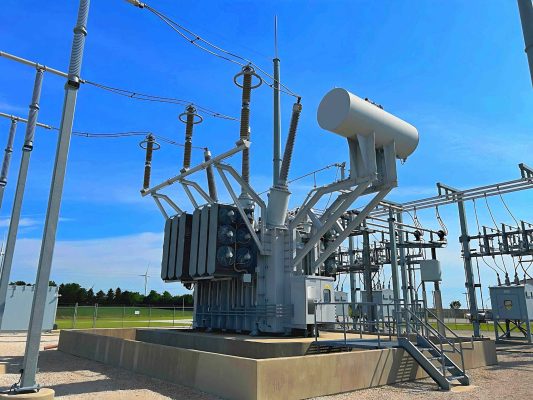
Custom training course and training program development
Advantages
Tailoring training courses to your company’s specific processes and procedures is crucial because it ensures that the training is directly relevant to the real-world conditions and challenges that your workers will face. Custom training:
- Gives your employees the skills and knowledge your organisation needs by incorporating your systems, policies and processes rather than a generic approach.
- Sets your technicians on a path to operational excellence future proofing your organisation through the skill of your workforce
- Gives your organisation clarity on where you are now as a precursor to where you want to be operationally
-
Compliance with Internal Standards: Every organization has unique safety protocols, maintenance schedules, and operational standards. Customized training ensures alignment with these internal requirements, reducing risks and improving consistency.
-
Cost-Effectiveness: While generic training may seem less expensive upfront, it often fails to address specific needs, leading to additional costs in retraining or correcting errors. Customized training delivers higher ROI by directly addressing organizational objectives.
How does it work?
STL USA works alongside your in-house training, safety, and field leadership to build training solutions that meet your organisation’s exact needs. Training solutions allow your organisation to create clear pathways to operational excellence, closing the gap between your workforce capabilities and your organisation’s needs.
Solutions incorporate:
- Technician and training resource assessments
- Giving you a clear picture of your capabilities
- Course development
- Bespoke courses built specifically around your organisation’s systems and processes that meet national standards
- Program development
- Creating learning and development pathways for individual technicians or groups of technicians at different experience levels (beginner>advanced)
- Course delivery and delivery support
- Training roll-out at your facilities or STL USA training center, either delivered 100% by STL USA or in partnership with in-house resources
- Feedback and continual improvement
- Reporting and analysis of testing and ongoing assessments as a test, learn and refine approach to course delivery
Training incorporates industry competency frameworks and applicable global and national standards.
In all cases an assessment is performed on the technician workforce to ascertain their competency levels and help define the right program to build their skills. Not only does this help to reduce your costs it also gives you a clear picture of what your team can, and most importantly can’t do.
Training solutions give your organisation an edge by building specific skills that give you an operational advantage. These programs allow you to tailor training to your organisation’s specific needs, rather than a one-size-fits-all approach found in many common certification and basic training solutions. In short, it allows you to excel and be better than the competition.
Certified Clean Energy Professional Program
Under this program STL USA offer the following services:
- Current training program assessment vs. ACP standardized competencies
- Advice, guidance and assistance developing and implementing a compliant training program
- Training support and delivery
- Technician assessments and reporting
 5 Star Reviews
5 Star Reviews
– Great facilities and awesome staff of instructors! Convenient and easy to find location for high-quality wind industry safety training. These folks make it fun and engaging.
– Learned a lot here! Polite and helpful staff. Such a comfortable environment to learn! They have a variety of up to date equipment and all instructors are very knowledgeable in their respective trades. If you need GWO (BST, ART, or BTT), this is the place to go!

Why Pattern Energy choose STL USA to build their in-house wind technician training solutions.
Custom Solutions
Assessments
- Certification review
- Skills and competency test
- Resource review
Course development
- Requirements and outcomes – understanding learning objectives
- Course creation – delivery framework/teaching guide, presentations, support material/handouts
- Testing – dry runs to iron out kinks
- Delivery
- Feedback and continual improvement
Program development
- Competency blueprint for stages – beginner, intermediate, advanced technicians
- Technician assesment reviews and gap analysis vs. blueprints
- Pathway development – training modules, timings
- Delivery
Example skills modules
Oscilloscopes
Failure Analysis
Maintaining Bearings
Precision Measuring Instruments
Hydraulic System Operation
Hydraulic Pumps, Pumping Principles and Accumulators
Pressure Controls
Directional and Flow Controls
Hydraulic Actuators
Fundamentals of Lubrication
Lubrication Maintenance
Introduction to Mechanical Print Reading
Lines Used in Mechanical Print Reading
Dimensions in Mechanical Print Reading
Mechanical Seals
Hand Operated Equipment
Forklifts and Cranes
Principles and Practices of Predictive Maintenance
Vibration Analysis
Lubricant and Trend Analysis
Techniques for Extending Bearing Life
Principles of Reverse Double Dial Alignment
Reverse Double Dial Alignment Procedure
Pressure Measurement
Flow Measurement
Temperature Measurement
Level Measurement
Calibration Principles
Calibrating Pressure and Differential Pressure Instruments
Calibrating Flow Instruments
Calibrating Level Instruments
Pneumatic and Hydraulic Test Devices
Electronic Test Devices
Calibrating Meteorological Instrumentation
Foundational skills
AC Motor Theory
AC Motor Maintenance
DC Motor Theory
DC Motor Maintenance
Fuses and Circuit Breakers
Limit Switches
Switches, Coils, and Overloads
Troubleshooting Electrical Control Circuits
Inverters: Operation and Maintenance
Multimeters
Ammeters, Meggers and Wheatstone Bridge
Electrical Schematics
Electrical Diagrams
Principles of Operation
Interpreting Ladder Logic
Programmable Controllers for Analog Control
Introduction to Transformers
Transformer operations and maintenance
Hand Tools
Torque and Tensioning
Ladders and Scaffolding
Distributed Control Fundamentals
Maintaining Distributed Control Systems
Electronic Controllers
Calibrating Temperature Instruments
Instruments In Hazardous Environments
Safety
NFPA 70E low and high voltage
GWO Control of Hazardous Energies
Pad mount switching
BOP Substation

